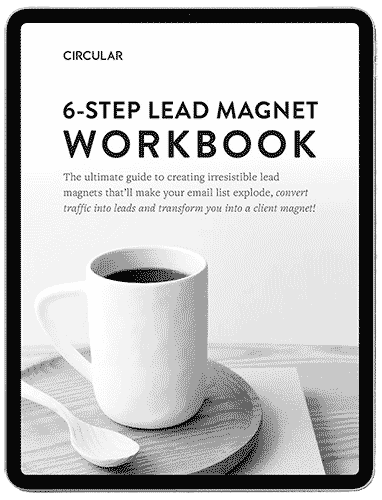Neurofeedback for Chronic Pain Murray UT
It feels like a trap doesnt it. The pain that just lives with you. Some days it’s a dull ache in the background, other days it screams for attention, making it impossible to focus at work or even just enjoy a walk with your family. You’ve tried stretching, medication, maybe even other therapies, and yet here you are. Still stuck.
I want you to know, you’re not imagining it. And you’re not out of options. We’re going to talk about a reason your pain might be sticking around that has less to do with your back or your joints, and more to do with your brain. We’ll look at a powerful, gentle approach called neurofeedback that helps retrain the brain to turn down the volume on pain.
I remember a client, a teacher from right here in Murray, who came to me completely defeated by migraines. She felt like her life was shrinking, planned around when the next one might hit. Her story is a real-life reminder that even when pain feels relentless, there are paths to a calmer life you just haven’t walked yet.
Is Your Brain Stuck in a Pain Loop?
When you first get injured, pain is a good thing. It’s an alarm bell that tells you to stop what you’re doing and take care of yourself. But with chronic pain, that alarm bell gets stuck in the “on” position, long after the original injury has healed. Your brain and nervous system get caught in a feedback loop, constantly telling your body that it’s in danger. It’s a pattern that becomes learned over time.
Think of it like a smoke alarm that keeps blaring even after you’ve aired out the kitchen from a piece of burnt toast. The threat is gone but the alarm system is still screaming. As a result, your muscles stay tense, you feel exhausted, and you might find yourself reaching for medication more and more just to get through the day. The National Institute of Neurological Disorders and Stroke describes chronic pain as a persistent signal in the nervous system, a concept that shows how deeply this pattern can get ingrained (1).

Neurofeedback: Retraining Your Brain to Dial Down the Pain
So how do you fix a stuck alarm? You have to reset the system. That’s where neurofeedback comes in. Simply put, it’s like physical therapy for your brain. It’s a non-invasive way to help your brain learn how to shift out of those stuck, high-alert patterns and into a calmer, more stable state. It’s a type of biofeedback, a method that uses electronic information to help you gain control over bodily functions.
Here’s how it works in our Murray office. We place a few small sensors on your scalp to listen to your brain’s electrical activity, or brainwaves. These signals are then translated into feedback on a screen, maybe as a video game you control with your mind or sounds that change as your brainwaves do. There are no shocks or anything uncomfortable. You just relax and watch the screen, and your brain naturally starts to figure out what it needs to do to “win” the game or make the pleasant sound continue. It’s learning to regulate itself. Over time, this helps modulate the sensory networks that process pain, effectively dialing down the intensity.
Who Can Neurofeedback Help (And Who It Might Not Be For)?
This is one of the most common questions we get. Neurofeedback has shown promising results for people dealing with a range of chronic pain conditions, especially those where the nervous system is highly involved. This includes things like fibromyalgia, chronic migraines and tension headaches, and even some types of nerve pain. It helps reduce the “wind-up” phenomenon where the nervous system becomes hypersensitive. As outlined by experts at institutions like the Mayo Clinic, biofeedback is often used for pain management (2).
But it isn’t a magic wand for everyone. People with certain serious neurological conditions or a history of seizures need to have a detailed conversation with their medical doctor and our therapists first. Your safety and well-being are the top priority. Finding the right support here in Murray starts with an honest conversation to determine if neurofeedback is the best and safest path for you.

Your First Step to a Quieter Life in Murray
Taking the first step is often the hardest part. Many people feel nervous because they dont know what to expect. A typical neurofeedback session is actually very relaxing. You’ll sit in a comfortable chair, we’ll get the sensors set up, and you’ll watch the screen for about 30 minutes. That’s it. Most people just feel calm and focused afterward.
Another big question is about insurance. Does insurance pay for neurofeedback? The honest answer is, it varies widely. Some plans do cover it, while others don’t. We can help you figure out what your plan might cover. But I encourage people to see this not just as a cost, but as an investment in getting their life back from pain. You’ve lived with that blaring fire alarm long enough.
If you’re ready to see if you can finally turn it off, let’s talk. You can learn more about how to take control of your health from great resources like MedlinePlus (3). When you feel ready to talk, schedule your initial consultation with us today.
Schedule Your ConsultationFrequently Asked Questions
Does neurofeedback work for chronic pain?
Yes for many people it does. It works by helping your brain change the patterns that keep you stuck in a pain cycle. It’s not a cure but it can significantly dial down pain intensity and muscle tension.
Is there a 12 step program for chronic pain?
While some programs use a 12-step model, neurofeedback is different. It’s a therapeutic process, not a step program. It focuses on retraining brain function directly with a therapist, tailored just for you.
Does insurance pay for neurofeedback?
Sometimes. Coverage really depends on your specific insurance plan and diagnosis. We can help you check your benefits to see what might be covered before you start.
Who should not do neurofeedback?
While its very safe, people with active seizure disorders or certain severe psychiatric conditions should be cautious. A thorough evaluation with one of our therapists is the first step to make sure its a good and safe fit for you.

